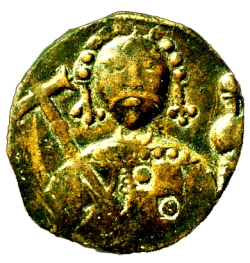
Robert "Guiscard" de Hauteville, sometimes Robert "the Guiscard", was a Norman adventurer remembered for his conquest of southern Italy and Sicily in the 11th century.

Roger I, nicknamed “Roger Bosso” and “Grand Count Roger”, was a Norman nobleman who became the first Grand Count of Sicily from 1071 to 1101.
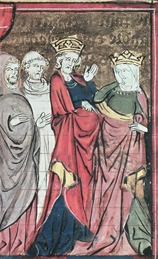
Adelaide del Vasto was countess of Sicily as the third spouse of Roger I of Sicily, and Queen consort of Jerusalem by marriage to Baldwin I of Jerusalem. She served as regent of Sicily during the minority of her son Roger II of Sicily from 1101 until 1112.

Roger Borsa was the Norman Duke of Apulia and Calabria and effective ruler of southern Italy from 1085 until his death.
Serlo I of Hauteville was a son of Tancred of Hauteville by his first wife, Muriella, probably the youngest, though some sources call him the eldest. Born before 1010, he was the eldest son of Tancred's to remain in Normandy. After a dispute with a neighbour, whom he killed over an insult, Serlo was exiled for three years. Around 1041, his father died and he inherited the small fief of Hauteville in the Cotentin and the sirery of Pirou through his wife. He was regarded, as were his brothers, as an exceptional warrior.

The Emirate of Sicily or Fatimid Sicily was an Islamic kingdom that ruled the Muslim territories on the island of Sicily between 831 and 1091. Its capital was Palermo, which, during this period, became a major cultural and political center of the Muslim world.

Jordan I, count of Aversa and prince of Capua from 1078 to his death, was the eldest son and successor of Prince Richard I of Capua and Fressenda, a daughter of Tancred of Hauteville and his second wife, also named Fressenda, and the nephew of Robert Guiscard, duke of Apulia, Calabria, and Sicily. He, according to William of Apulia, "equalled in his virtues both the duke and his father."

Richard II, called the Bald, was the count of Aversa and the prince of Capua from 1090 or 1091. He was under the guardianship of Count Robert of Caiazzo until he came of age in 1093.
William of Hauteville was one of the younger sons of Tancred of Hauteville by his second wife Fressenda. He is usually called Willermus instead of Wilelmus in Latin annals and so is often called Guillerm instead of Guillaume in French.
Geoffrey the Elder was an Italo-Norman nobleman. A nephew of Robert Guiscard through one of his sisters, he was the count of Conversano from 1072 and the lord of Brindisi and Nardò from 1070, until his death.
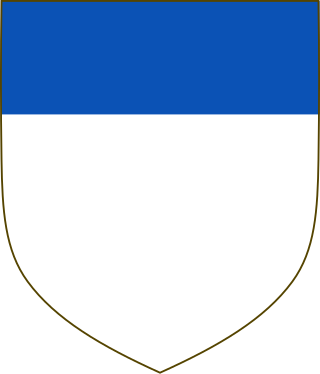
Boniface del Vasto was the margrave of Savona and Western Liguria from 1084 to c.1130. He was the son and successor of Otto and of Bertha, daughter of Ulric Manfred II of Turin. Boniface was a member of the Aleramici dynasty.

The House of Hauteville was a Norman family originally of seigneurial rank from the Cotentin. The Hautevilles rose to prominence through their part in the Norman conquest of southern Italy. By 1130, one of their members, Roger II, was made the first King of Sicily. His male-line descendants ruled Sicily until 1194. Some Italian Hautevilles took part in the First Crusade and the founding of the Principality of Antioch (1098).
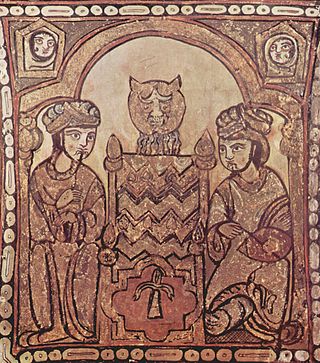
The history of Islam in Sicily and southern Italy began with the first Arab settlement in Sicily, at Mazara, which was captured in 827. The subsequent rule of Sicily and Malta started in the 10th century. The Emirate of Sicily lasted from 831 until 1061, and controlled the whole island by 902. Though Sicily was the primary Muslim stronghold in Italy, some temporary footholds, the most substantial of which was the port city of Bari, were established on the mainland peninsula, especially in mainland southern Italy, though Muslim raids, mainly those of Muhammad I ibn al-Aghlab, reached as far north as Naples, Rome and the northern region of Piedmont. The Arab raids were part of a larger struggle for power in Italy and Europe, with Christian Byzantine, Frankish, Norman and local Italian forces also competing for control. Arabs were sometimes sought as allies by various Christian factions against other factions.

The Norman conquest of southern Italy lasted from 999 to 1194, involving many battles and independent conquerors.

The County of Sicily, also known as County of Sicily and Calabria, was a Norman state comprising the islands of Sicily and Malta and part of Calabria from 1071 until 1130. The county began to form during the Christian reconquest of Sicily (1061–91) from the Muslim Emirate, established by conquest in 965. The county is thus a transitional period in the history of Sicily. After the Muslims had been defeated and either forced out or incorporated into the Norman military, a further period of transition took place for the county and the Sicilians.

The Battle of Cerami was fought in June 1063 and was one of the most significant battles in the Norman conquest of Sicily, 1060–1091. The battle was fought between a Norman expeditionary force and a Muslim alliance of Sicilian and Zirid troops. The Normans fought under the command of Roger de Hauteville, the youngest son of Tancred of Hauteville and brother of Robert Guiscard. The Muslim alliance consisted of the native Sicilian Muslims under the Kalbid ruling class of Palermo, led by Ibn al-Hawas, and Zirid reinforcements from North Africa led by the two princes, Ayyub and 'Ali. The battle was a resounding Norman victory that utterly routed the opposing force, causing divisions amongst the Muslim aristocracy which ultimately paved the way for the eventual capture of the Sicilian capital, Palermo, by the Normans and subsequently the rest of the island.
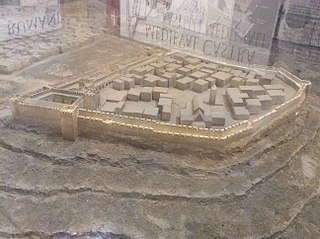
The Norman invasion of Malta was an attack on the island of Malta, then inhabited predominantly by Muslims, by forces of the Norman County of Sicily led by Roger I in 1091. The invaders besieged Medina, the main settlement on the island, but the inhabitants managed to negotiate peace terms. The Muslims freed Christian captives, swore an oath of loyalty to Roger and paid him an annual tribute. Roger's army then sacked Gozo and returned to Sicily with the freed captives.
The Battle of Misilmeri was fought in 1068 just outside Palermo during the Norman conquest of Sicily. The battle was fought between a raiding Norman force and a larger Muslim army consisting of both Kalbid Sicilians and Zirid Africans. The battle resulted in an important Norman victory as it led to the abandonment of the Kalbids by their Zirid allies and opened the way for the Norman conquest of Palermo in 1072
Ibn ‘Abbād, also known as Benavert, was the last Emir of Sicily. He was the Emir of Syracuse, and from 1072 to 1086 he led the last Arab resistance against the Normans, who were conquering Sicily.
Fressenda was an 11th-century Norman noblewoman and the wife of Tancred of Hauteville. She is known as the mother of Robert Guiscard and Roger I of Sicily.














